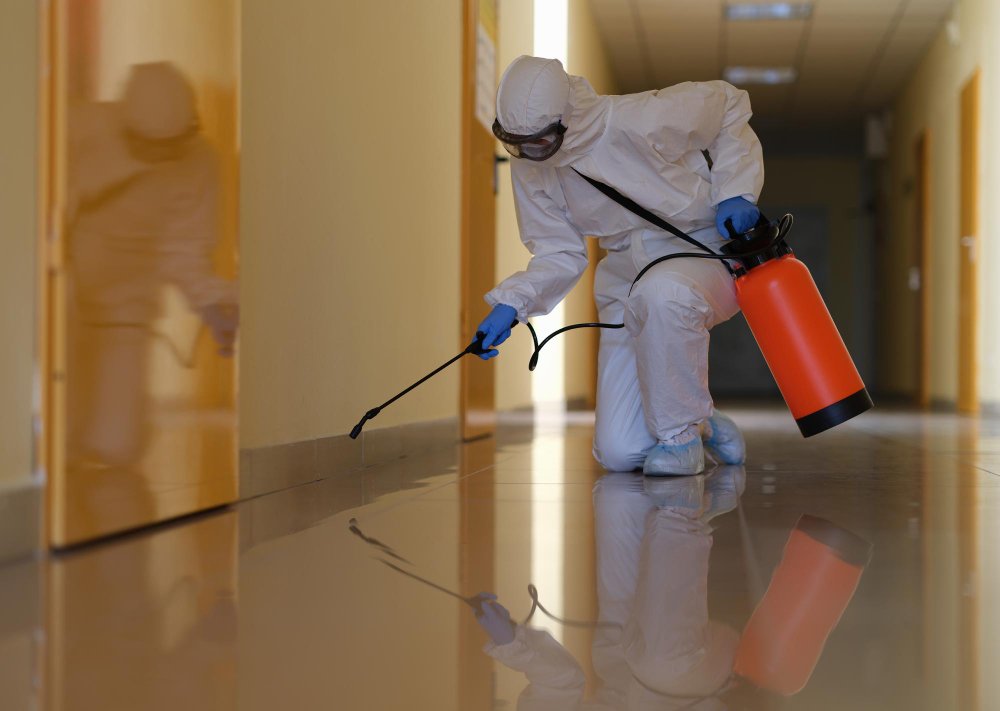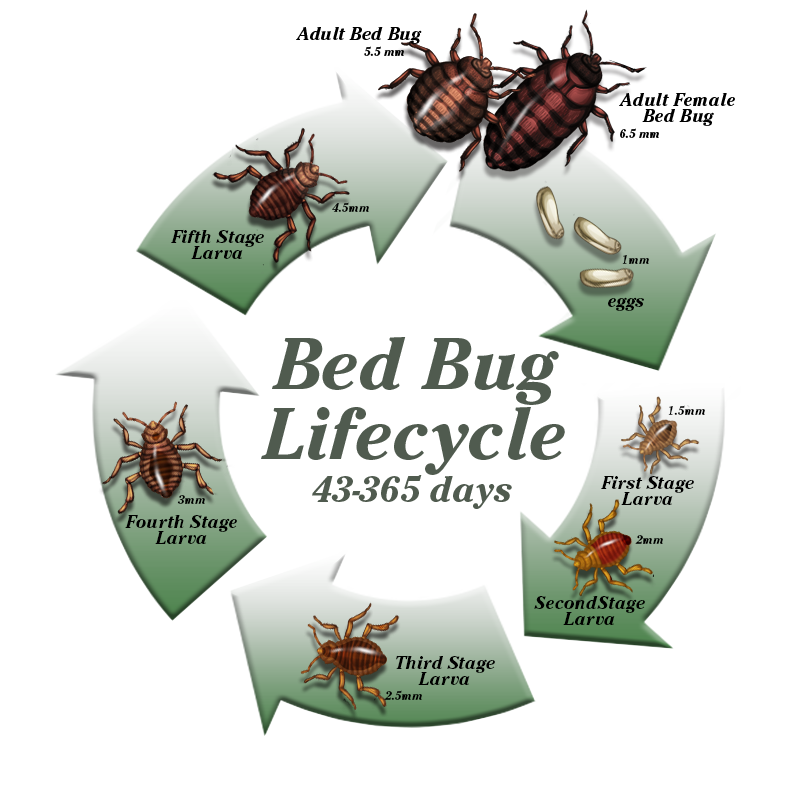Affordable Bed Bug Heat Treatment for Quick and Effective Results
Affordable Bed Bug Heat Treatment for Quick and Effective Results
Blog Article
Obtain Enlightened Concerning the Types of Pest Control Methods and Their Benefits for Property Owners
Recognizing the numerous pest control methods available to property owners is necessary for reliable parasite monitoring. From chemical and organic strategies to mechanical and cultural practices, each technique provides one-of-a-kind advantages that can significantly affect both health and wellness and environmental safety. Home owners that are knowledgeable can make tactical choices that not only address parasite concerns however also enhance the total top quality of their living atmosphere. As we explore these approaches better, it comes to be clear that the decision-making process involves even more than simply immediate outcomes; it touches on long-lasting sustainability and wellness. What variables should affect these critical decisions?
Chemical Parasite Control Methods
Chemical bug control methods are an essential element of incorporated pest administration strategies for house owners looking for effective options to pest problems. These methods include the application of chemical materials developed to get rid of or hinder pests that endanger personal effects, health, and comfort. Typical chemicals made use of include insecticides, herbicides, rodenticides, and fungicides, each tailored to target certain parasites.
The primary advantage of chemical insect control is its fast efficiency; lots of solutions provide immediate results, decreasing pest populations substantially quickly. In addition, advancements in chemical formulas have resulted in items that are a lot more eco pleasant and have reduced poisoning levels for non-target organisms when applied correctly.

Biological Parasite Control Techniques
All-natural parasite control methods have actually obtained prominence as house owners look for safer and a lot more lasting alternatives to standard chemical strategies. Biological insect control strategies utilize natural predators, bloodsuckers, or virus to manage pest populations efficiently. This approach is not just eco-friendly but likewise lessens the threat of harm to non-target species, including helpful pests and wildlife.
One of the most common biological control techniques includes presenting all-natural killers right into the setting. Ladybugs can be used to control aphid populations, while nematodes target soil-dwelling insects like grubs. Furthermore, parasitoids-- organisms that survive on or within a host-- can be utilized to manage particular insect types by laying eggs inside them, eventually resulting in their demise.
Another method is making use of biopesticides, which are originated from natural products such as plants, minerals, or microorganisms (bed bug exterminator). These products can effectively target pests while posing marginal threat to animals and humans. Overall, organic bug control methods offer homeowners with a reliable methods of bug management that straightens with eco-friendly principles, promoting a much healthier living atmosphere while decreasing reliance on artificial chemicals
Mechanical Insect Control Strategies
Mechanical pest control approaches include a variety of techniques that physically protect against or get rid of pests without the usage of chemicals. These techniques are specifically helpful for property owners looking for eco-friendly choices while ensuring the safety and security of their living areas.
One common technique is using obstacles, such as screens, webs, and traps, which stop pests from going into homes or specific areas. For example, installing home window displays can efficiently maintain insects out, while utilizing physical obstacles around gardens can prevent bigger insects like deer or bunnies. Furthermore, mechanical catches made for rodents can capture and eliminate these parasites without the demand for toxic compounds.
One more reliable approach involves using mops and vacuum cleaners to get rid of bugs directly from surface areas. Normal cleansing and upkeep can significantly lower parasite visit homepage populaces by removing food sources and hiding areas. Utilizing devices like ultrasonic insect repellents can hinder numerous bugs with pest abatement audio waves that are unpleasant to them yet faint to humans.
Cultural Insect Control Practices
Social parasite control methods concentrate on modifying the atmosphere and monitoring techniques to produce problems that are much less for pest problems. These practices are basic in keeping a balanced ecological community and lowering the reliance on chemical interventions. By changing agricultural practices, homeowners can properly hinder bugs while advertising plant health.
One usual strategy includes crop rotation, which disrupts the life cycles of bugs by transforming the sorts of plants expanded in a certain area (bed bug exterminator). This not only decreases pest populaces but also improves soil health. Furthermore, intercropping-- planting diverse crops in closeness-- can puzzle bugs and minimize their ability to find their preferred host plants
Water monitoring is another critical facet of cultural techniques. Proper watering techniques can stop standing water, which serves as a reproduction ground for insects and other insects. Preserving sanitation in and around the home, such as frequently getting rid of debris and food waste, can considerably lower pest tourist attraction.
Integrating these social practices into a detailed parasite management technique enables home owners to create an environment that naturally deters pests, thereby enhancing the performance of various other control approaches while advertising lasting gardening and link landscaping.

Integrated Parasite Monitoring Approaches
Integrated Parasite Management (IPM) represents a holistic method that combines different approaches to properly manage bug populaces while minimizing environmental impact. This technique integrates organic, social, physical, and chemical methods to attain sustainable bug control. By evaluating pest populations and their natural opponents, IPM stresses monitoring and identifying parasites before executing control procedures.
Among the core principles of IPM is using thresholds, which develop the degree of parasite activity that calls for treatment. This guarantees that treatments are applied only when necessary, minimizing the dependence on chemical pesticides. Organic control techniques, such as presenting all-natural killers or parasites, job in conjunction with cultural methods like plant rotation and environment manipulation to interfere with pest life cycles.
Moreover, IPM encourages using least-toxic chemical options when intervention is necessary, focusing on products that present marginal risk to non-target microorganisms and the environment. For house owners, taking on IPM approaches not just boosts the efficacy of bug administration yet also advertises a much healthier living environment, promoting biodiversity and lowering chemical exposure. Ultimately, IPM equips home owners to make informed decisions that stabilize insect control with environmental duty.
Verdict
To conclude, understanding the numerous parasite control approaches encourages home owners to make informed decisions regarding pest management. Each strategy-- chemical, organic, mechanical, social, and incorporated parasite monitoring-- uses unique benefits that deal with different demands and choices. By choosing suitable methods, homeowners can effectively take care of bug populations while reducing health threats and ecological effects. This informed strategy adds to a healthier living environment, advertising general well-being for families and pet dogs alike.
Recognizing the different pest control techniques available to house owners is important for reliable insect monitoring.Chemical pest control techniques are a vital part of integrated bug management techniques for homeowners seeking reliable solutions to pest invasions. On the whole, biological bug control strategies provide house owners with a reliable means of insect monitoring that aligns with environmental concepts, advertising a healthier living environment while minimizing dependence on artificial chemicals.
Social pest control methods concentrate on changing the setting and management techniques to produce problems that are much less helpful to pest problems.In verdict, understanding the various insect control techniques equips house owners to make enlightened choices pertaining to pest management.
Report this page